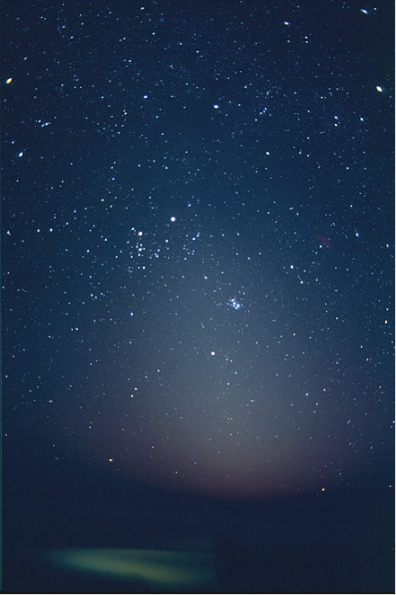Zodiacal Light from La Palma
Zodiacal Light from La Palma: A Spectacular Natural Phenomenon
Zodiacal light is a mesmerizing celestial phenomenon that illuminates the night sky. When observed from the pristine location of La Palma in the Canary Islands, this ethereal display reaches its pinnacle. Situated at a latitude of 28°N and blessed with exceptionally clear air, La Palma offers optimal conditions for witnessing the full splendor of the zodiacal light.
Zodiacal light appears as a soft, cone-shaped glow that extends vertically from the horizon. It is caused by sunlight reflecting off countless dust particles that are scattered throughout the plane of our solar system. These particles, believed to be remnants from the formation of planets, form a vast, disk-like structure known as the zodiacal cloud.
La Palma's low latitude enhances the visibility of the zodiacal light, allowing observers to marvel at its intricate details. The absence of light pollution further accentuates its ethereal beauty, enabling viewers to witness the full extent of this celestial spectacle. In fact, La Palma is renowned among astrophotographers and stargazers for providing some of the clearest and darkest skies in the world.
The zodiacal light is best observed during certain times of the year when the ecliptic—the apparent path of the Sun across the sky—rises steeply from the horizon after sunset or before dawn. These favorable conditions typically occur in spring and autumn. However, on La Palma, due to its unique geographical location, observers can witness this celestial phenomenon for an extended period throughout the year.
When gazing at the zodiacal light from La Palma, one may also be fortunate enough to witness the enchanting Pleiades star cluster. The Pleiades, also known as the Seven Sisters, is a group of young, hot stars that shine brightly against the backdrop of the zodiacal light. This combination creates a captivating celestial vista that is truly awe-inspiring.
To fully appreciate the zodiacal light from La Palma, it is recommended to find a location with an unobstructed view of the eastern or western horizon. Away from the lights of civilization, the dark sky reveals the zodiacal light in all its glory. It is an experience that transports observers to a realm where the wonders of the universe unfold before their eyes.
The zodiacal light is not limited to La Palma; it can be observed from other low-latitude regions as well. However, La Palma's unique combination of geographical location, clear air, and minimal light pollution make it an exceptional destination for stargazers and astrophotographers seeking to witness and capture the beauty of this celestial phenomenon.
In conclusion, witnessing the zodiacal light from La Palma is a truly magical experience. The convergence of favorable geographical conditions and pristine skies allows observers to immerse themselves in the celestial wonders above. Whether you are an avid stargazer, an astrophotographer, or simply someone who appreciates the magnificence of the natural world, La Palma offers a front-row seat to the breathtaking display of the zodiacal light.

Zodiacal Light and the Pleiades from Roque de los Muchachos, La Palma, Canary Islands/Spain.
Imaged in the summer of 2002 by Nik Szymanek(astrophotography site).
Low latitudes (La Palma is 28°N) and very clear air free of light pollution are best to see the soft cone of the zodiacal light in its full glory.
Image ©Nik Szymanek, shown with permission.
Note: this article has been automatically converted from the old site and may not appear as intended. You can find the original article here.
Reference Atmospheric Optics
If you use any of the definitions, information, or data presented on Atmospheric Optics, please copy the link or reference below to properly credit us as the reference source. Thank you!
-
<a href="https://atoptics.co.uk/blog/zodiacal-light-from-la-palma/">Zodiacal Light from La Palma</a>
-
"Zodiacal Light from La Palma". Atmospheric Optics. Accessed on November 16, 2024. https://atoptics.co.uk/blog/zodiacal-light-from-la-palma/.
-
"Zodiacal Light from La Palma". Atmospheric Optics, https://atoptics.co.uk/blog/zodiacal-light-from-la-palma/. Accessed 16 November, 2024
-
Zodiacal Light from La Palma. Atmospheric Optics. Retrieved from https://atoptics.co.uk/blog/zodiacal-light-from-la-palma/.